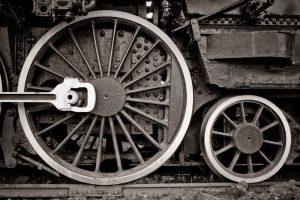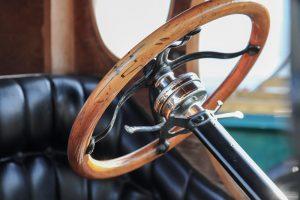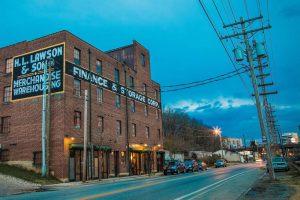
Roanoke: Railroad & Coal
In 1870, in Virginia, a new rail line extending from Norfolk to Bristol defaulted to E.W. Clark & Co., a private banking firm in Philadelphia. Taking that line as its basis, the bank created Norfolk & Western Railway (N&W). Frederick J. Kimball, a partner in the Clark firm, was selected to head both the new N&W line and the Shenandoah Valley Railroad. For the junction of the Shenandoah Valley and the Norfolk & Western railroads, Kimball and his board of directors selected the small Virginia village called Big Lick, located on the Roanoke River. The grateful citizens offered to rename their town “Kimball”, but, at his suggestion, agreed to name it after the river. As the N&W brought people and jobs, the Town of Roanoke quickly grew, becoming an independent city in 1884. Kimball’s interest in geology was instrumental in the development of the Pocahontas coalfields in western Virginia and West Virginia, and, in turn, he pushed N&W lines throughout the wilds of West Virginia, north to Columbus and Cincinnati, Ohio, and south to Durham and Winston-Salem, North Carolina. Centered on Roanoke, this expansion drove the city’s development into an economic and cultural nexus between the banks of the Pennsylvania and the coalfields of West Virginia.
The N&W Shops
Over time, N&W became famous for manufacturing steam locomotives in-house. Its reputation for excellence in steam power engineering was largely solidified by the company’s shops in Roanoke. Here, a workforce of thousands labored over the A, J, and Y6 locomotives, which remained the most advanced and efficient locomotives for much of the 20th century. Forming the industrial heart of Roanoke, the N&W shops designed, built, and maintained locomotives until 1953, long after diesel-electric had emerged as the motive power of choice for most North American railroads. In the 1960s, the N&W became the last major railroad in the United States to convert from steam to diesel power.
The Lawson Building
631 Campbell Ave SE, Roanoke, VA, was built in 1925 by Harry Leland Lawson. In point of origin, the building, and its associated landscape, was a one-stop-model T-shop. Taking advantage of the site’s topography and a rail spur located directly behind the warehouse, the Lawsons imported first generation Model T’s to the Roanoke area and its increasing network of roads. Using an oversized freight elevator, workers could maneuver vehicles throughout the building and ultimately unload them directly onto Campbell Ave. The site also housed a mechanic’s garage and a fueling station. The building’s design was utilitarian and focused on the industrial commerce at the heart of Roanoke’s burgeoning industrial economy. Today, the Lawson Building is a Virginia Landmark and is currently listed on the National Register of Historic Places.




Elevate Your Living
Experience downtown Roanoke living at its finest. Contact us to learn more!


